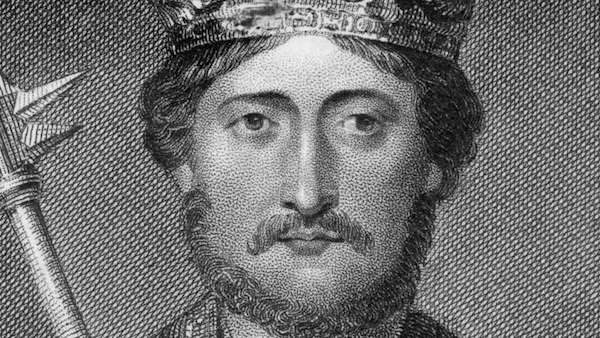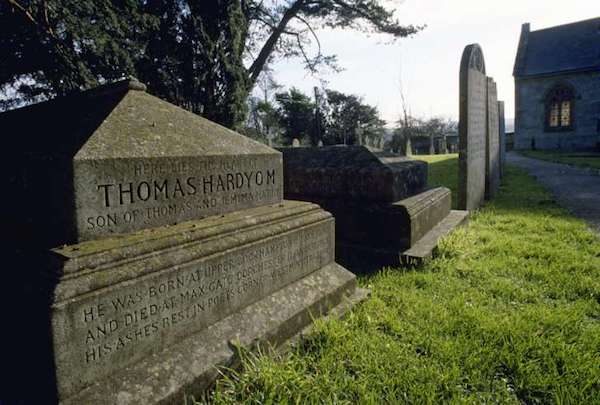
[T]hough it may seem bizarre today, having your heart buried apart from the rest of your body wasn’t uncommon for European aristocracy of the Middle Ages and beyond. The practice arose in part during the Crusades, when high-ranking warriors had a tendency to die in “heathen” places that weren’t seen as desirable burial locations. But transporting a whole body back to Europe made things pretty stinky, so corpses were stripped of flesh and ferried back to Europe as skeletons, with the inner organs (including the heart) removed and buried where the Crusaders had died. By the 12th century, members of the English and French aristocracy also frequently had their hearts buried separately from the rest of them.
Heart burial became less practical and more symbolic by the 17th century, partly as a religious practice associated with the Jesuits and other Counter Reformation groups. (Some scholars think the heart’s powerful symbolism became particularly important while the Catholic Church was undergoing a moment of crisis.) In Western Europe, it became common for powerful individuals, such as kings and queens, to ask that their hearts be buried in a spot they’d favored during life. In more recent years, Romantic poets and other artists also picked up the practice, which has yet to be entirely abandoned.
1. RICHARD I
Richard I, a.k.a. “Richard the Lion-Heart,” ruled as King of England 1189-99 but spent most of his reign fighting abroad, which is how he earned his reputation for military prowess. (He also may or may not have eaten the heart of a lion.) He died after being struck by a crossbow while campaigning in Chalus, France, and while most of his body was buried at Fontevraud Abbey, his heart was interred in a lead box at the Cathedral of Notre Dame in Rouen, France. The organ was rediscovered during excavations in the 1830s, and in 2012, forensic scientists examined it—now mostly reduced to a grayish-brown powder—to learn more about Richard’s precise cause of death (some think a poisoned arrow dealt the fatal blow). The crumbling heart was too decayed to tell them much about how Richard had died, but the scientists did learn about medieval burial rituals, noting the use of vegetables and spices “directly inspired by the ones used for the embalming of Christ.”
2. ROBERT THE BRUCE
Robert the Bruce, King of Scots 1306-29, asked for his heart to be buried in Jerusalem. But it didn’t get all the way there—the knight he entrusted it to, Sir James Douglas, was killed in battle with the Moors while wearing the heart in a silver case around his neck. Other knights recovered the heart from the battlefield, and brought it back to Melrose Abbey in Scotland for burial. Archeologists rediscovered what they believed to be the heart in 1920 and reburied it in a modern container; it was exhumed again in 1996, and reburied beneath the abbey’s lawn in 1998.
3. ST. LAURENCE O’TOOLE

St. Laurence O’Toole, the second archbishop of Dublin and one of that city’s patron saints, died in 1180 in France. His heart was sent back to Dublin’s Christ Church Cathedral, where it rested inside a heart-shaped wooden box within an iron cage—at least until 2012, when it was stolen. The dean of Christ Church Cathedral has speculated that the heart might have been taken by some kind of religious fanatic, since it has little economic value, and much more valuable gold and silver objects were ignored. (Weirdly, the thief, or thieves, also lit candles on one of the altars before fleeing.) The item has yet to be recovered.
4. THE PRINCE-BISHOPS OF WÜRZBURG
The prince-bishops of Würzburg (part of modern Germany) practiced a three-part burial: their corpses were usually sent to Würzburg cathedral, their intestines to the castle church at Marienberg, and their hearts, embalmed in glass jars, to what is now Ebrach Abbey. The practice was common by the 15th century, though it may go back as far as the 12th. Their funerals at the Marienberg castle also featured what may be one of history’s worst jobs: a servant was required to hold the heads of the corpses upright during the funeral, which featured the body seated upright and impaled on a pole. The funerals lasted for several days. There were more than 80 prince-bishops; a German cardiologist who made a special study of heart burial says “about 30” of their hearts found their resting places in the abbey.
5. ANNE BOLEYN
According to legend, after Anne Boleyn’s beheading in 1536, her heart was removed from her body and taken to a rural church in Erwarton, Suffolk, where the queen is said to have spent some happy days during her youth. In 1837, excavations at the church uncovered a small, heart-shaped lead casket inside a wall. The only thing inside was a handful of dust (it’s not clear whether it was actually the heart), but the casket was reburied in a vault beneath the organ, where a plaque today marks the spot.
6. LOTS OF POPES
Twenty-two hearts from various popes—from Sixtus V in 1583 to Leo XIII in 1903—are kept in marble urns at Santi Vincenzo e Anastasio a Trevi in Rome. Traditionally, the hearts were removed with the rest of the organs as part of the postmortem preservation process, and kept as relics just in case the pope became a saint.
7. FRÉDÉRIC CHOPIN
Romantic composer Frédéric Chopin died in Paris in 1849, and most of him is buried in that city’s Pere Lachaise, but he asked for his heart to be buried in his native Poland. His sister carried it back to their home country, where it is preserved in alcohol (some say cognac) within a crystal urn inside a pillar at the Church of the Holy Cross in Warsaw. In 2014, scientists conducted a late-night examination of the heart to make sure the alcohol hadn’t evaporated, although their secrecy frustrated scientists who hope to one day examine the organ for clues about what killed the composer.
8. THOMAS HARDY

The English poet and novelist Thomas Hardy wanted to be buried in his hometown of Stinsford, Dorset, but friends insisted that a burial in Westminster Abbey was the only appropriate choice for someone of Hardy’s literary prominence. But when town officials found out that Hardy’s body was destined for the abbey, they threw a fit, and so a compromise was reached—most of Hardy went to Westminster, but his heart was buried in Stinsford churchyard (where it has its own grave marker). A persistent, but unproven, story has it that a cat ate part of the heart when the doctor who was removing it got distracted; a gruesome addendum says the animal was killed and buried alongside the organ.
9. PERCY SHELLEY
When the poet Percy Shelley died sailing the Mediterranean in 1822, local quarantine regulations dictated that his body had to be cremated on the beach. But his heart allegedly refused to burn, and a friend, the adventurer Edward Trelawny, supposedly plucked it out of the flames. After a custody battle among Shelley’s friends, the heart was given to Percy’s wife Mary, who kept it until she died. Her children found it in a silk bag inside her desk, and it is now said to be buried with her at the family vault in Bournemouth, England.
10. OTTO VON HABSBURG
The powerful House of Habsburg practiced heart burial for centuries, with many of the organs buried in copper urns in Vienna’s Augustiner Church. In 2011, Otto von Habsburg, the last heir to the Austro-Hungarian Empire (which was dissolved in 1918), had his heart buried in the Benedictine Abbey in Pannonhalma, Hungary. The rest of him was buried in Vienna. The erstwhile crown prince said he wanted his heart buried in Hungary as a gesture of affection for the country—one half of his former empire.
Complete Article ↪HERE↩!
